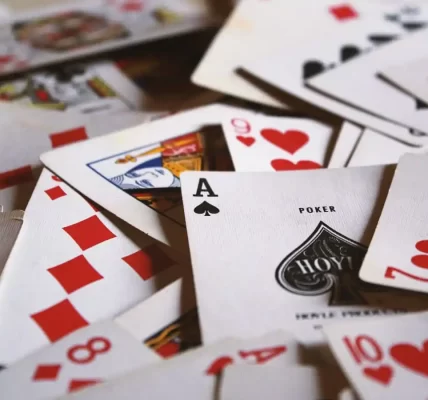Each player is dealt 10 cards at the beginning of a game. Any unmatched cards are called deadwood. You should aim to have as little deadwood as possible when you knock.
Arrange your cards properly to spot potential sets and sequences. You should also be careful when discarding high cards after reaching half-deck, especially in variants allowing incomplete hands to end the hand.
Game rules
The basic rules of rummy require players to arrange cards into runs or sequences of three or more cards of the same suit. The player with the lowest total count wins the hand. To reduce deadwood points, it is helpful to play with a set of cards that are easy to form into runs and sequences. Jokers are also useful in completing runs or inducing the knocker to go out.
Each player draws a card from the stock or discard pile on his turn and ends his turn by playing a card to an existing meld. He can also lay off cards on valid melds that have been played by other players. However, he may not call Rummy on the top card of the discard pile.
Basic strategy
The basic strategy in rummy involves building your own melds and eliminating deadwood cards. It is also important to pay attention to what your opponents are discarding and drawing from the discard pile. This will give you clues about the type of runs and sets they have in their hands.
It is a good idea to keep your deadwood to a minimum by discarding unusable high points, as these cards will count against you when an opponent goes out. You should also focus on forming pure sequences as this will reduce your score when you declare.
Once a player plays all of his cards and discards the last one on the discard pile, he wins the hand. He then collects the minus points from all other players’ remaining cards in their hands and adds them to his own total.
Melds
Observe how your opponents handle their discards and what cards they pick from the stock pile. This information can provide important clues about their strategy and whether they are close to going gin or knocking. It also helps you to make informed decisions about your own discards. You should avoid picking a high card from the discard pile unless you have a good reason to do so.
To win a game of Rummy, you must put all your cards into matching runs and sets in your hand, which is called going gin. If you do this, you receive 25 points for your hand and the value of all your opponent’s unmatched cards, or deadwood. In some variations, a player may choose to end the game by showing their melds and saying, “Knock.” The other players can then lay off deadwood cards into this meld.
Deadwood cards
The deadwood cards are any unmatched cards in your hand that are not part of melds. You want to minimize the number of these cards. If you have no deadwood, you are able to knock, and the round ends immediately. When you knock, the opposing player is given one last chance to form sets and runs before the game ends. The winner of the hand scores points based on the value of their opponent’s deadwood cards, including 10 points for each Royalty card (King, Queen, Jack) and the face value of other cards in their opponents’ hands.
Knocking is not mandatory, but you should aim to do so as soon as possible to minimise your opponent’s score. If you knock with gin, you get 25 bonus points on top of your deadwood score.
Laying off
When a player wishes to end play before their opponent reaches gin, they must clearly indicate this by discarding a card face down and rapping on the table or saying “Knock.” The non-knocking player then reveals their cards, showing their melds with any deadwood cards in a separate pile. The knocking player can then lay off their deadwood into the melds of their opponent.
The value of a deadwood card is determined by its rank and suit, but the defending player may only add it to a run or sequence that is already laid down. For example, if the knocking player has three Kings as deadwood, the defender can lay off their fourth King to reduce their deadwood count by 10 points. This is known as an undercut.






